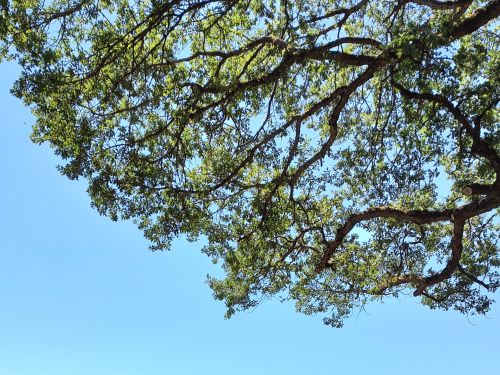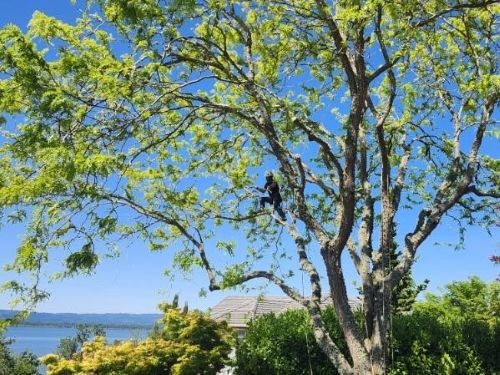Trees are an essential part of the Pacific Northwest landscape, offering beauty, shade, and environmental benefits. However, maintaining healthy trees requires year-round care tailored to each season. From pruning and fertilizing to pest management and winter protection, understanding seasonal tree care can help your trees thrive for years to come.

Spring Tree Care
Spring is a critical time for tree health as trees come out of dormancy and begin active growth.
Pruning
Remove dead or damaged branches to encourage healthy growth. Avoid heavy pruning, which can stress the tree during its growth period.
Fertilizing
Apply a slow-release fertilizer to support new leaf and flower development. Use soil tests to determine nutrient needs and avoid over-fertilization.
Pest & Disease Management
Monitor for early signs of pests such as aphids or caterpillars. Fungicide treatments can be applied if leaf spot or anthracnose has been a recurring issue in previous years.
Watering
Ensure adequate moisture as spring rains taper off, particularly for young or newly planted trees.
Summer Tree Care
Summer care focuses on protecting trees from heat stress and maintaining their structural integrity.
Pruning
Limit pruning during hot summer months to prevent stress and sunscald on exposed branches. Remove only dead or dangerous limbs.
Watering
Deep, infrequent watering encourages strong root growth. Mulching around the base helps retain soil moisture and reduces temperature fluctuations.
Pest Monitoring
Check for insect activity such as bark beetles or leaf-eating caterpillars. Early intervention can prevent severe infestations.
Disease Prevention
Watch for signs of fungal infections, particularly on trees in shaded or poorly ventilated areas.
Need Help with Taking Care of the Trees on Your Property?
Fall Tree Care
Fall is ideal for preparing trees for winter dormancy.
Pruning
Remove any weak or crossing branches to prevent damage from winter storms. Avoid heavy pruning that may encourage new growth vulnerable to frost.
Fertilizing
Apply a slow-release, low-nitrogen fertilizer to strengthen roots and improve resilience through the colder months.
Leaf Management
Collect fallen leaves to prevent fungal spores from overwintering, which can reduce disease pressure in the spring.
Pest Control
Treat for late-season pests and monitor for signs of insect eggs or larvae that may survive winter.
Winter Tree Care
Winter care focuses on protecting trees from harsh weather and environmental stress.
Pruning
This is an excellent time for structural pruning since trees are dormant. Removing deadwood now reduces the risk of storm damage.
Protection
Wrap young or thin-barked trees with protective material to prevent sunscald and frost cracks. Avoid piling snow or heavy mulch against the trunk, which can cause rot.
Watering
Water evergreen trees during dry winter periods to prevent desiccation, especially when the ground is not frozen.
Inspection
Regularly inspect trees after storms for broken limbs or damage. Prompt removal of hazard branches protects both your trees and property.
General Tree Care Tips Throughout the Year
- Mulching: Apply mulch around the base of trees in spring and fall to conserve moisture, regulate soil temperature, and reduce weed competition.
- Soil Health: Test soil periodically and amend as necessary to maintain nutrient balance and pH levels suitable for your tree species.
- Tree Support: Install stakes for young trees and cables for weak branches to prevent structural failure.
- Professional Assistance: Hire certified arborists for major pruning, disease management, or tree removal to ensure safety and long-term health.
Keeping Your Trees Thriving
Year-round tree care is essential for maintaining healthy, strong, and beautiful trees in the Pacific Northwest. By following seasonal pruning, fertilizing, watering, and pest management guidelines, you can help your trees thrive through every stage of the year. Proactive care not only improves the health and longevity of individual trees but also enhances the beauty and sustainability of your entire landscape. Combining regular inspections, proper maintenance, and professional assistance when needed ensures that your trees remain a valuable asset for years to come.

